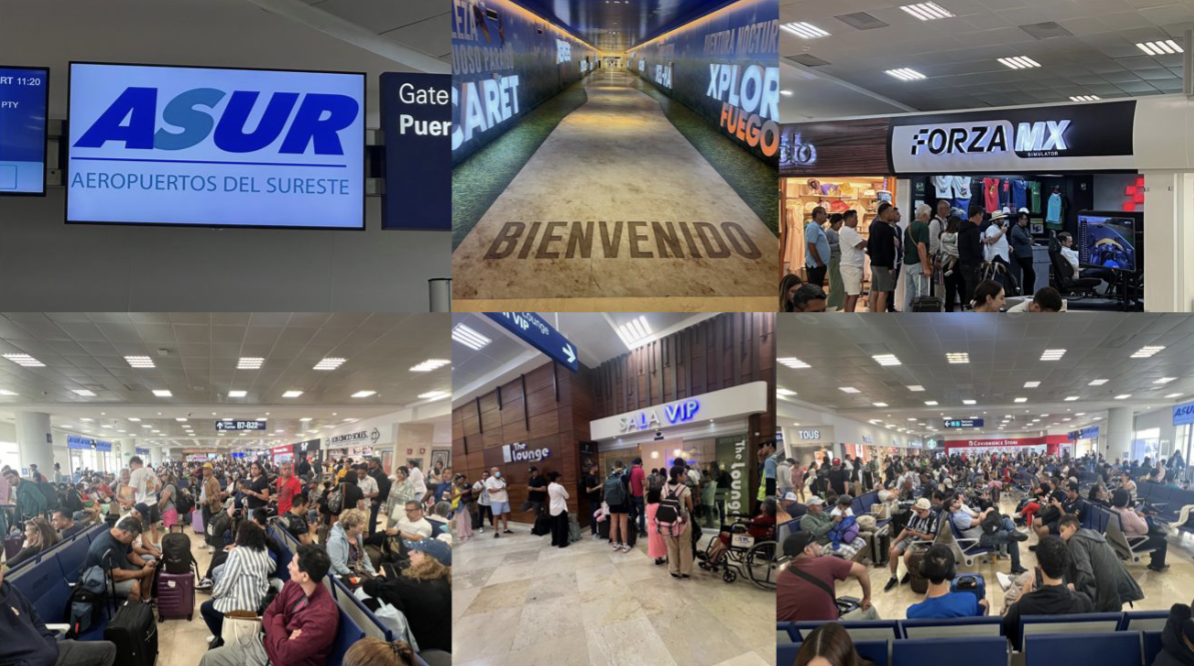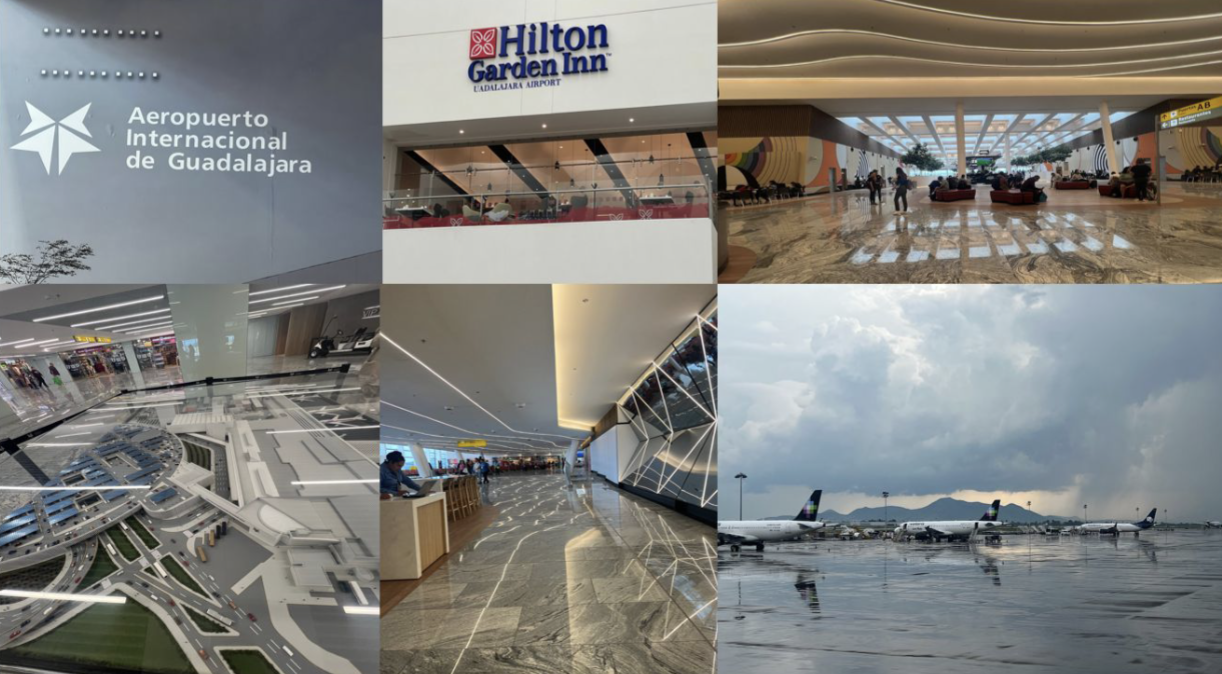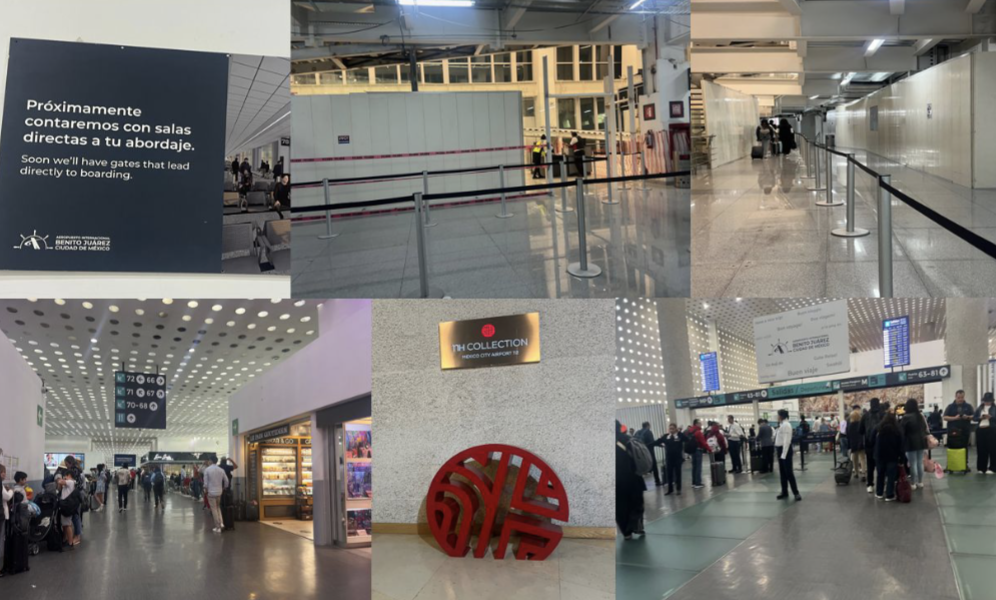3 airport stocks ready for take-off
However, it’s widely believed there will be a strong rebound as soon as capacity is available – there’s no demand weakness to date, despite a significant ticket price uplift. And the long-term sector thematics remain strong from tourism to the emergence of a growing middle class and the evolving near-shoring opportunity.
In this wire, the fourth in our five-part Trip Insights series, we'll discuss some of these themes.
Mexican airports
It was great to catch up with the three Mexican airport operators, particularly in light of recent sector headwinds, namely:- 2023 regulatory change,
- Pratt & Whitney plane recall, and
- Mexico City slot cancellation.
As well as strong sector tailwinds, including:
- very buoyant demand profiles,
- the cargo opportunity, and
- the CAPEX opportunity – incorporated into master development plans (MDP) plans.
Recap of regulatory change
The Mexican Airport Regulation had long been considered some of the best in the world - very constructive, very supportive and very stable having not been “tested” since privatisation over 25 years ago.That all changed on the 4th of October 2023, when the Mexican Civil Aviation Authority sought to unilaterally alter the Mexican Airport Regulation. To re-cap what proved to be a very controversial decision:
- The changes were in contravention of the Concession Contract which states that any regulatory re-design must be agreed upon between the parties.
- The announcement was a huge shock to the operators and market alike and the operators spent two weeks behind closed doors, with the regulators negotiating intentions versus outcomes.
- There was no market communication in those two weeks.
- Between the announcement on 4th October and the ‘agreement’ on the 19th the proposal was completely remodelled to something the operators could agree to.
The rationale for the change was supposedly to:
- Reflect the change in capital structures relative to 25 years ago,
- To properly articulate the return calculation, and
- To limit the excessive profits being realised by the operators since COVID.
The stocks completely sold off given the perceived threat to a once-stable regulatory construct, the fact that the operators themselves had been unaware of the threat and a clear lack of detail on the proposals. If, as suggested, the move had been politically motivated, it backfired as the market punished the intervention at a national level.
- Tried to launch a Pemex (Mexican Petroleum, Mexico's state-owned petroleum firm) bond issuance two days after the announcement about the airports which was completely rejected by the market.
- Mexican pension funds are big holders of airport stock and bonds, so the sell-off had a significant impact on domestic Mexican pension balances.
We spent a considerable amount of time assessing the negotiated outcome at both a quantitative and qualitative level.
The operators were clear that their relationship with the ministry and regulator had been and remains constructive. The operators also believed that once a negotiated outcome had been reached, there would be no further intervention in the sector and that the first MDPs under the new regulation would be constructive to rebuild credibility.
This is incredibly important in light of the new electoral reform. Given the change to the framework last year, there has been no suggestion, and the three airport operators and market participants alike, think it incredibly unlikely, that the government is looking to revisit the airport space at any point which is good news.
It's also fair to say that the outcomes of the two MDPs negotiated under the new model have been not only constructive but highly value accretive for the operators giving us increasing confidence in the renewed credibility of the framework.
Grupo ASUR (BMV: ASURB)
ASUR was the first to negotiate its MDP under the new regulation with a submission and response agreed within a month of the change. The outcome was very positive, beating consensus and our forecasts providing a huge jump in Capex and an associated 45% upside to the tariff in nominal terms.This trip enabled us to see exactly how and where that money will be allocated. Continued Terminal 4 expansion to support ongoing growth in tourism as well as a revamp of Terminal 1 to take much-needed overflow from Terminal 2 (handling 15 million passengers with a design capacity of 10 million).
This trip reiterated my view of ASUR as a very well-operated listed airport operator as evidenced by the use of space and design at Cancun Airport - from margarita bars at arrival to speedy and efficient baggage claim and customs and ForzaMx racing simulators on departure - all designed to keep the tourist happy.
The destination continues to offer tourists good value, great weather, easy access and crystal blue warm waters, we see ongoing growth across the airport both in passengers and commercial upside.

GAP (BMV: GAPB)
I was impressed with the thought that went into the design, openness, layout and diversity of offering, and most importantly, the clear upside to commercial spending that is coming as construction of phase one ends and these spaces open.
While I was in Guadalajara, management was finalising negotiations on their new MDP and while talking down the outcome, the subsequently released result was incredibly positive with a significant jump in CAPEX, compensated by a huge jump in the tariffs both of which were again well ahead of market expectations and highly value accretive for the stock.

OMA (BMV: OMAB)
However, as there has been no suggestion that the airports are on the Sheinbaum (Claudia Sheinbaum Pardo, the current President of Mexico) agenda, they are expecting a smooth transition and discussion with the airport regulator next year.
It’s worth commenting that the recent change in shareholder control to French airport giant, Vinci (EPA: DG), is supporting OMA in all areas of operations from commercial design and implementation to routing, and supply chains and we would expect regulatory negotiations. It was very clear that OMA is stronger for the Vinci control.
Pratt & Whitney recall
Another near-term headwind for the global airport space, and in particular the Mexican airport operators, is the ongoing recall of Pratt & Whitney aircraft, which has significantly restricted available capacity for the operators this year. The recall commenced in Q4 23 and has steadily ramped up since. Each plane taken out of circulation is forecast to be grounded for 300 days.All three Mexican operators flagged that Q3 24 will be the worst quarter in terms of traffic impact with some planes coming back online in Q4, a steady return through 2025, and very strong growth anticipated for 2026.
This recall was well-known leading into 2024, so the passenger weakness is no surprise. Fromconversations with the operators, I would note:
- Positively - some signs that the recalled aircraft will be back flying earlier than the forecast 300-day recall period.
- Positively - demand remains very strong despite restricted capacity and the operators are expecting a ‘hockey stick’ style recovery once planes become available – for example, according to GAP, the two impacted airlines (Volaris and Viva) were both at a 90% load factor in July despite a significant hike to ticket prices.
- Positively - passenger impacts have been factored into the MDP demand forecasts, accommodated by the regulatory tariffs.
- Mixed - Viva has managed the situation better than Volaris, which has provided some upside to traffic expectations. While Volaris has just ceased all routes on which an aircraft has been grounded, Viva has leased alternative aircraft for particular routes to keep planes in the air.
- Positively - airlines using the situation opportunistically to mix up routes – bringing back more profitable routes faster and favouring new international destinations over the return of less profitable domestic flights. This could see the smaller, more domestic-orientated airports impacted for longer (OMA) but other airports benefiting from the improved mix.
Mexico City
It’s hard to get excited about Mexico City airport but certainly highlights the stark contrast in user experience between privately managed airports and government-controlled operations. Space availability and utilisation are sub-optimal, commercial offerings are incredibly limited and, as such, very expensive and the overall passenger comfort is low.
On the positive side, the airport terminal hotel, owned privately by OMA, was conveniently located, recently renovated and offered the comfort and convenience you would hope for when dealing with late landings and early flight departures.
This has positive and negative implications for the listed airport operators:
- Negatively – in the short term, these cancellations further restrict route capacity between listed airport locations and Mexico City – a critical national hub.
- Positively – with little expectation that Santa Lucia and Toluca airports will evolve alongside the main Jaurez airport as planned, there is an opportunity for the listed operators to use spare regional capacity to create alternate transit hubs. This could be an opportunity for OMA (Monterrey, a northern hub) and GAP (Guadalajara), both of which see the slot restriction as a net positive for their airport operations. By contrast, ASUR has no plans to capitalise on this given the scarce capacity at Cancun and the lower value of a transfer passenger.
- Positively – as a user, the lower slot allocation means that the once very busy terminal is much less so today, with check-in, immigration and security dwell times lower than they were historically.

The cargo opportunity
As discussed earlier, near-shoring is a significant opportunity for the country as a whole, which has created a growing cargo opportunity for well-positioned airports in particular. Again, this isnot an ASUR story, which is all-around tourism. However, both GAP and OMA have identified
significant cargo potential.
GAP recently opportunistically acquired a 51.5% controlling stake in Guadalajara World Trade Centre (GWTC). GWTC consists of seven companies that specialise in handling, storage, and custody services for international cargo through facilities classified as a free trade zone at Guadalajara Airport and Puebla Airport.
This was a very attractively valued deal, paying just 4.25x EBITDA for an asset anticipating double-digit revenue and EBITDA growth in a Capex light model. It was easily absorbed by the balance sheet and positions GAP well to capitalise on the near-shoring opportunity.
The cargo opportunity is an evolving one, and given little is factored into valuations at this stage, it could represent a significant upside to those that capitalise on it well.
Capital allocation
All three Mexican airport operators have incredibly strong balance sheets (arguably sub-optimal), which has allowed them to:- effectively manage debt levels to optimise regulatory outcomes,
- incorporate huge expansion and associated capex into their MDPs,
- capitalise on synergistic opportunistic deals including GWTC and hotel assets,
- explore what limited M&A is available in the market, and
- reward shareholders with strong ordinary dividends, specials and buybacks.
In conclusion
While the airports are not without some near-term headwinds and negative country sentiment, we believe this is more than priced into current share prices and the risk/reward trade-off continues to favour investment in the sector:- ASUR – a very positive MDP agreed and executed well on the investment program. It’s positioned well to capitalise on the long-term demand profile in Mexico as well as being the most diversified player with exposure outside of Mexico to Colombia and Puerto Rico. Further, it fundamentally benefits from the FX weakness with international passenger tariffs priced in USD.
- GAP – exceptional MDP negotiations recently finalised and the company is positioned well to capitalise on Mexican demand recovery, an emerging middle class, near-shoring, airline re-routing and the cargo opportunity.
- OMA – probably the cheapest and well-positioned to capitalise on long-term country thematics. It’s also benefiting from its new Vinci ownership. However, it’s the only one with a remaining MDP overhang that won’t dissipate until 2025.
Other airport stops
A very quick note on the four other airport stops on this trip – again reiterating our view thatthe user benefits from private ownership and operation.
- Dallas Fort-Worth Airport – the dread of transiting through a government-controlled US airport was well-placed, with significant delays at immigration (even when not stopping in the USA) and a 40-minute disorganised security screening queue, which was considered ‘fast’.
- Panama City Airport – large, well-designed modern privately operated terminal that managed to facilitate a 45-minute transit (from landing to departure) for not only me but also my luggage.
- Gaurulhos Airport Brazil – has been in private hands since 2012 and finally starting to see some optimisation of commercial space and an improved passenger experience.
- Santiago International Airport – a strange mix of government/private ownership with the user benefiting from operations being controlled by a European consortium including Aeroports de Paris and Vinci Airports


3 topics
2 funds mentioned

